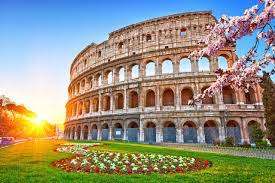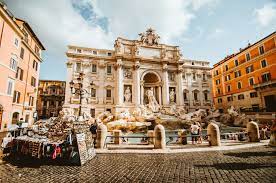Italy: How to spend 48 hours in Rome

Rome: Contrary to the title of this article, do not spend 48 hours in Rome on your first attempt. Unless you have legs of steel, high levels of determination and a desire for non-stop sightseeing.
The two pivots about which the city’s history turns – the Vatican and the Roman Forum – are best taken a day each and visited early, fuelled by €1 coffees and sweet, crumbly pasticcini off sticky local bar counters: 48 hours, done.
But to focus on these titanic monuments of European history alone is to miss the real chatter of the city: couples meeting for Monday drinks by the Ponte Sisto, watching the sun go down on the Tiber from the Isola Tiberina, lingering under the vaults of (some) of Rome’s more than 900 churches.

Instead, rise with the Italian larks (not much before 8am) and head to St. Peter’s. Even when you have been to Rome hundreds of times, approaching the piazza in front of the world’s second largest basilica in crisp morning sunlight doesn’t feel far from heavenly and climbing the 551 steps to the top of its dome is worth the early workout to see the rusted rooftops of the city stretch out before you.
Next wander back via one of the Vatican’s many coffee bars – or grab a slice of pizza from Alice Pizza on Via delle Grazie if you are so inclined – heading along the river to the Castel Sant’Angelo. The restaurant there also has an excellent view.
On the religious theme but also limiting church intake to a manageable amount, we wandered on a mini tour of churches with Caravaggio paintings around Piazza Navona: San Luigi dei Francesi followed by Sant-Agostino and then to Piazza del Popolo for Santa Maria del Popolo, which holds two dramatic portrayals of Saints Peter and Paul by the artist in its Cerasi chapel.
Beware of their opening times: many close for a long period over lunch.
If you are there on a Sunday, drop into Pizzeria La Montecarlo to slam through a no frills pizza alongside local nonnas and gossiping teenagers. No puffed up Neapolitan dough here, just crisp parchment-like Roman crusts. It’s open on other days but the Italian Sunday lunch is a thing of beauty wherever you are.
The other grande bellezza in Rome is to walk. Public transport leaves a reasonable amount to be desired and bus times can be creative.
Take a coffee and make a post-lunch perambulation along Via dei Coronari, a straight street through the old city that has existed since Roman times but is now lined with artisan and antiques shops. It used to be where sellers of rosary beads marketed their wares.
We next stumbled upon the Trevi Fountain and gelato at Gelateria San Crispino dished up by a merciless old signore and then to the Spanish Steps for a pause at the top. But you could just sit in front of the nearby Farnese Palace – now the French embassy – and gaze up at its striking Renaissance facade with an Aperol.
It would be criminal not to pay true testament to Rome’s food in the evening. Some of the UK’s favourite pasta imports – cacio e pepe, amatriciana, carbonara – are Roman staples and despite it being invented in Venice, tiramisu is a regular feature for dessert.
The best way to do it, though, is to venture to one of the city’s many supper clubs, which we discovered by the suggestion of a friend who booked with the Airbnb of supper clubs EatWith.
Ours was at the home of Debora Tomeucci, a no-nonsense Roman by birth and attitude, previously a marketing director and now a chef, who introduced us to cucina Romana in the shape of baccala (salted cod – tastes better than it sounds) and a seasonal cacio e pepe with poached pears.
The myth of whether the Italians really eat four courses every night we never quite fathomed, although Debora admitted that she hates sweets and always orders a whole bottle of wine because ‘you can always take it home’.
Starting slow the next morning with a bus up to the Villa Borghese seemed wise.
Here a bonanza of Renaissance frescoes to rival the Vatican line the walls of what was essentially a cardinal’s play palace, filled with breathless sculpture by the likes of Bernini and Canova. It’s a riot – and one that raises more than just an eyebrow at holy men of yore’s ability to spend lavishly on less than charitable causes. Even if you don’t love Renaissance flourishes, it’s worth a look.
Not least because the 80 hectare gardens surrounding it make up Rome’s most beautiful park. Grab a picnic from the kiosk of Amir – it honestly will appear if you type it into Google maps – and wander past the boating lake and up to the other more esoteric galleries such as the Museo Pietro Canonica, once the home of the 19th century Italian sculptor but before that a pen for the cardinal’s peacocks and ostriches.
You could spend more or less all day in the Borghese gardens, coming back via Terraza del Pincio with its expansive view of the city back towards St. Peter’s.
Finish, sated, at the venerable family run trattoria Settimio All’Arancio in Via del Corso, where we pondered over plates of tagliata while eavesdropping on three older ladies in heated discussion over Netflix with the local priest, before wandering back over the Tiber to the buzzy Trastavere neighbourhood to wind down at Il Cantiere with some jazz.





